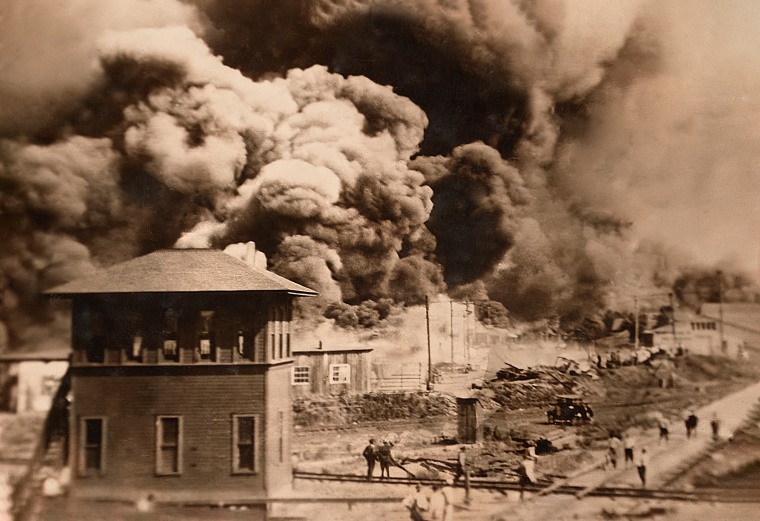The first person identified from a century-old mass grave of victims in the Tulsa Race Massacre of 1921 is a Black World War I veteran, Tulsa’s mayor announced Friday.
C.L. Daniel served in the U.S. Army and was likely no older than 25 when he died during the deadly riot, according to forensic investigators who identified him this week.
About 300 people were killed by a racist mob and more than 1,000 Black-owned homes and businesses were destroyed on May 31 and June 1, 1921.
The city of Tulsa launched an investigation into 120 unmarked graves in 2021, and researchers began combing through the gravesites to identify people who had been buried during the riot in Tulsa’s prosperous Greenwood District, known as “Black Wall Street.”
Daniel was born in Newman, Georgia, to Thomas Daniel and Amanda Merriweather Daniel. His mother was a widow by 1910 and had to provide for her seven sons.
Daniel was stationed at Camp Gordon in Chamblee, Georgia, during the war and was honorably discharged after nine months and 16 days. He spent 19 days in a base hospital, possibly for a leg injury, according to Phoebe Stubblefield, an anthropologist at the University of Florida involved in Daniels’ identification.

In 1919 Daniel set out to explore the country. He wrote a letter in February 1921 asking for veteran benefits and expressing his ongoing struggles with injuries. In May he stopped in Tulsa on the way back to visit his mother in Georgia.
It is still unknown how Daniel died, but Intermountain Forensics was able to confirm that the remains, which were excavated in 2021 at the Oaklawn Cemetery, belonged to Daniel thanks to DNA connected to next of kin and a letter written from his family attorney looking for veteran benefits on his mother’s behalf.
Multiple researchers worked on the identification, including DNA Doe Project, Moxxy Forensics, Forensic Investigative Genetic Genealogy and Identifiers International.
At a news conference Friday, Tulsa Mayor G.T. Bynum said that researchers were led to a letter written by an attorney representing Amanda Daniel, who was seeking benefits after the death of her son.
Alison Wilde, director of Forensic Investigative Genetic Genealogy, said the DNA connection was made thanks to “family history hobbyists” who have uploaded their DNA test results and family trees to websites such as GEDmatch. Using the hobbyist data, Wilde and the team were able to narrow the search down to a set of brothers. In digging through records of the brothers, they found the letter from Daniels’ mother through the National Archives.
Wilde went on to say that they are confident the victim can be identified as Daniel since his mother said in the letter that he had died in the massacre.
Daniel’s body was not well preserved, and his remains were in fragments, Stubblefield said.
“So he was in good enough shape for us to determine his skeletal age that he was a young man. I’m not sure he even made 25,” Stubblefield said.
The identity of Daniel’s next of kin has not been released.
“We’re all choked up about this,” Bynum said. “And this is one family who gets to give a member of their family that they lost the proper burial after not knowing where they were for over a century. We know we have at least 17 more people to find in this cemetery, and it is so important that we keep that work going.”
For more from NBC BLK, sign up for our weekly newsletter.







